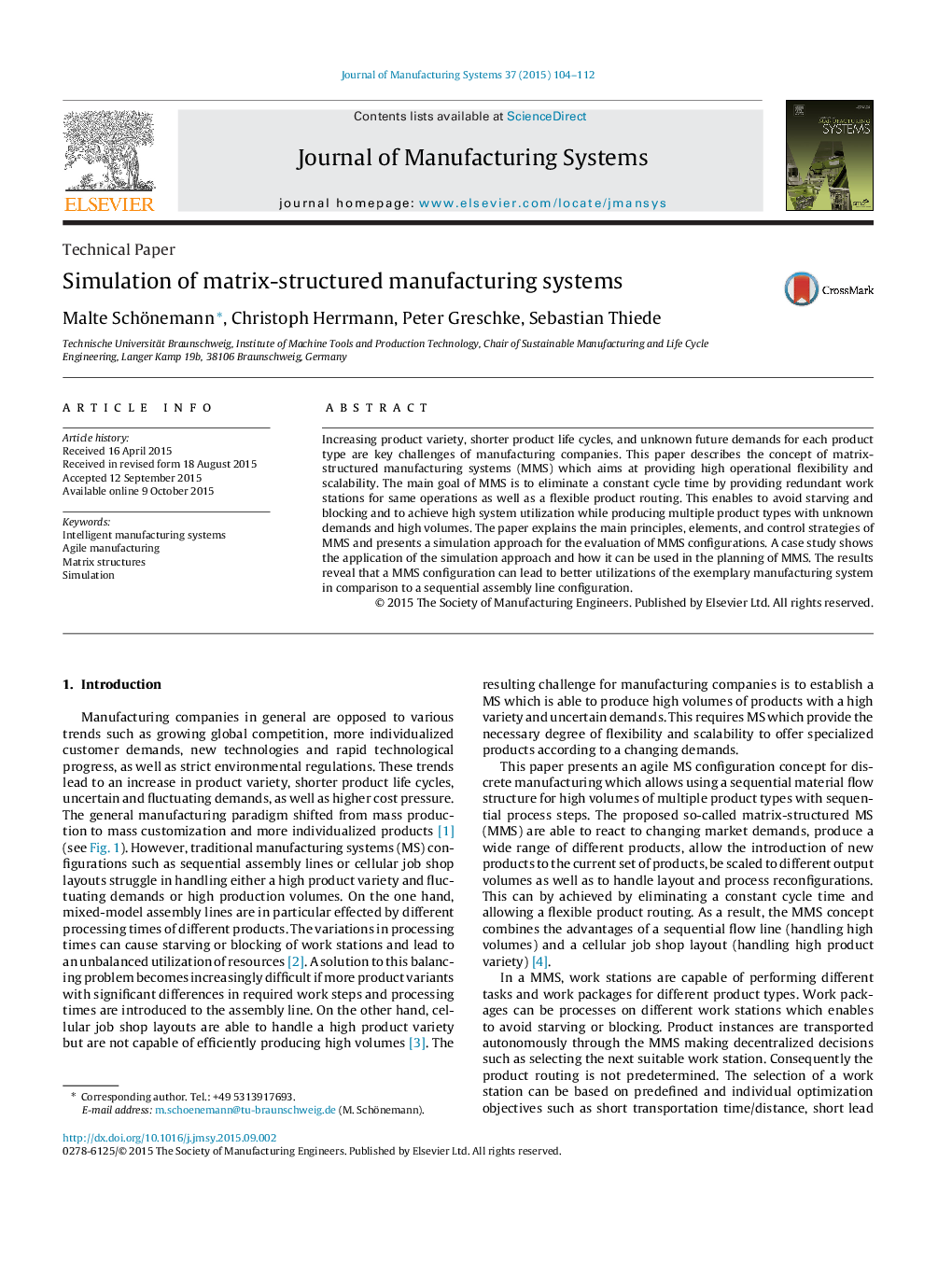| Article ID | Journal | Published Year | Pages | File Type |
|---|---|---|---|---|
| 1697529 | Journal of Manufacturing Systems | 2015 | 9 Pages |
•Introduced the concept of matrix-structured manufacturing systems (MMS).•MMS aim at high flexibility and scalability for multi-product manufacturing.•MMS have no constant cycle time and work stations perform different work packages.•MMS are more robust to disturbances and can achieve high system utilizations.•A simulation approach was developed for the design and evaluation of MMS.
Increasing product variety, shorter product life cycles, and unknown future demands for each product type are key challenges of manufacturing companies. This paper describes the concept of matrix-structured manufacturing systems (MMS) which aims at providing high operational flexibility and scalability. The main goal of MMS is to eliminate a constant cycle time by providing redundant work stations for same operations as well as a flexible product routing. This enables to avoid starving and blocking and to achieve high system utilization while producing multiple product types with unknown demands and high volumes. The paper explains the main principles, elements, and control strategies of MMS and presents a simulation approach for the evaluation of MMS configurations. A case study shows the application of the simulation approach and how it can be used in the planning of MMS. The results reveal that a MMS configuration can lead to better utilizations of the exemplary manufacturing system in comparison to a sequential assembly line configuration.
